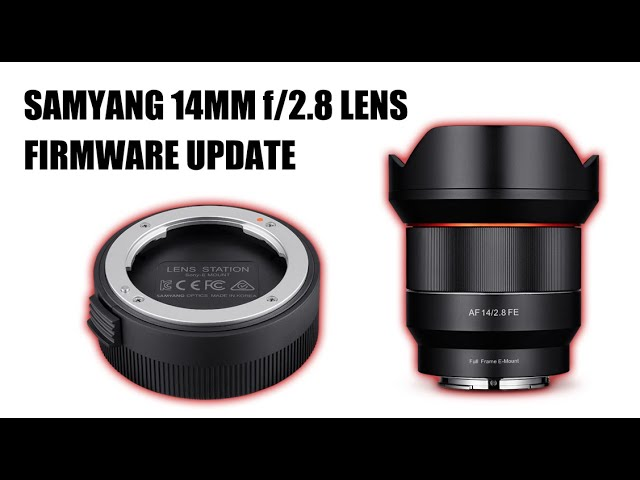Photography Tips for New Users of XEEN Classic and XEEN CF
- Talha
- Jul 17
- 4 min read
XEEN lenses by Samyang are known for delivering cinematic image quality, manual precision, and creative flexibility. Two of their standout series—XEEN Classic and XEEN CF (Carbon Fiber)—have become favorites among filmmakers and high-end content creators. If you're a new user exploring photography with these cine-style lenses, you're likely entering a new level of creative control.
Unlike typical autofocus lenses, XEEN Classic and XEEN CF are built for professionals who demand full manual control, exceptional optics, and cinematic rendering. But how do you harness their full potential as a photographer—especially if you’re transitioning from standard still-photo lenses?
Here’s a practical guide filled with tips to help you make the most of XEEN Classic and XEEN CF lenses in your photographic workflow.
Understanding the XEEN Philosophy
Before jumping into shooting techniques, it’s important to understand what makes XEEN lenses different. These lenses are designed primarily for cinema, but their features can enhance still photography in unique ways.
XEEN Classic
Designed with a vintage cinematic look in mind
Features coated and uncoated lens elements for creative visual options
Produces softer flares and lower contrast for atmospheric imagery
XEEN CF (Carbon Fiber)
Lightweight and compact with a carbon fiber build
Full-frame coverage with sharp, modern rendering
Geared rings for smooth focus and aperture control
While both lenses are manual focus, they reward users with stunning detail, excellent color reproduction, and an unmatched cinematic feel in still images.
1. Master Manual Focus Techniques
XEEN lenses don’t offer autofocus, which means precise manual focusing is essential. Use the following tips:
Use Focus Peaking: Most mirrorless and DSLR systems support focus peaking—highlighting in-focus areas with a colored overlay.
Zoom in Digitally: Use your camera’s magnification tool during live view to zoom in on your subject and fine-tune focus.
Use a Tripod: For static scenes like portraits or landscapes, a tripod can help stabilize the frame and ensure perfect sharpness.
2. Embrace Wide Apertures Creatively
Both XEEN Classic and XEEN CF lenses offer wide apertures (T1.3 to T2.6 depending on focal length), allowing for beautiful shallow depth of field. In photography, this means:
Soft, dreamy backgrounds perfect for portraits or close-ups
Strong subject separation that adds depth to your image
More light entering the lens, ideal for low-light environments
However, wide apertures can reduce sharpness at the edges. Try stopping down slightly (e.g., from T1.5 to T2.0) to balance bokeh and sharpness.
3. Use Lens Characteristics to Shape Your Style
XEEN Classic
Known for its vintage look, this lens is great for storytelling with a nostalgic tone.
Great for black-and-white portraits or stylized street photography.
Experiment with backlighting to use the lens’s unique flare characteristics creatively.
XEEN CF
With its modern coating and contrast, the CF line is ideal for crisp, clean imagery.
Perfect for commercial, fashion, or landscape photography.
Lightweight design makes it suitable for handheld shooting and gimbal setups.
4. Set Exposure Manually for Maximum Control
XEEN lenses have a manual aperture ring, allowing you to set your T-stop precisely. This is different from traditional photo lenses with electronic aperture control.
Use your camera’s live histogram or exposure meter to get proper exposure.
If you're shooting in varying lighting, consider using ND filters instead of changing your aperture mid-shot to maintain a consistent depth of field.
5. Pair with High-Resolution Sensors
Both the Classic and CF series lenses are designed for cinema-level quality. To fully benefit from their resolving power and microcontrast, pair them with full-frame or high-resolution sensors (e.g., 30MP+).
This will help bring out subtle textures, color depth, and highlight roll-off—especially in natural light.
6. Consider Color Grading Even in Photography
XEEN Classic lenses are known for delivering filmic tones straight out of the camera, but don’t be afraid to enhance their look further through post-processing:
Slightly lower contrast and increase grain for a true vintage aesthetic.
Warm up shadows for a cinematic grade.
Use LUTs or presets inspired by film stocks to match your artistic vision.
7. Choose the Right Focal Length for Your Genre
XEEN and XEEN CF lenses come in various focal lengths such as 24mm, 35mm, 50mm, 85mm, and 135mm. Here's how to match them with your photography style:
Focal Length | Best For |
24mm–35mm | Street photography, environmental portraits, landscapes |
50mm | General-purpose, editorial, portraiture |
85mm–135mm | Close-up portraits, fine art, compression-heavy compositions |
8. Balance Artistic Vision with Practicality
Using cinema lenses for photography is not always practical for fast-paced shoots. XEEN lenses are ideal when:
You have time to set up your shot.
You want to create intentional, cinematic-style images.
Your subject is cooperative and scenes are static (e.g., studio shoots, creative portraits, landscapes).
They may not be ideal for action, sports, or events where autofocus is critical.
Final Thoughts
Shooting photography with XEEN Classic and XEEN CF lenses opens up a world of cinematic visual storytelling, even in still frames. With manual controls, rich optics, and a distinctive artistic character, these lenses challenge you to slow down and shoot with intention.
For new users, the learning curve can be steep—but the creative rewards are immense. With the right techniques, a little patience, and a vision, you’ll unlock the full potential of these professional-grade tools and elevate your photography beyond the ordinary.


Comments